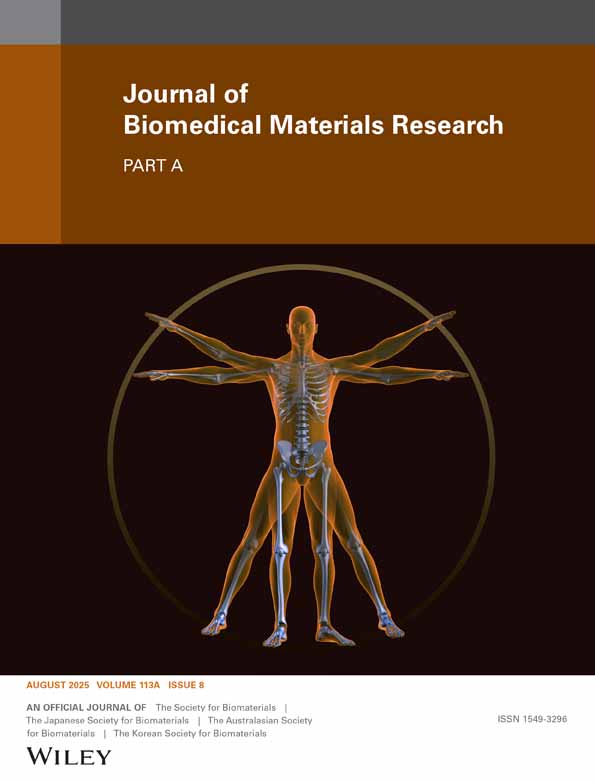Combination material delivery of dexamethasone and growth factor in hydrogel blended with hyaluronic acid constructs for neocartilage formation
Abstract
The aim of this study was to assess the efficacy of poly(NiPAAm-co-AAc) blended with hyaluronic acid (HA) as an injectable cell vehicle and a cell therapeutic agent in the form of a supporting matrix for the chondrogenic differentiation of rabbit chondrocytes. Specially, rabbit chondrocytes were embedded in blended hydrogels co-encapsulation with dexamethasone (Dex) and growth factors for enhancing the chondrogenic differentiation. Blended hydrogel constructs consisting of embedded cells co-encapsulating Dex and TGF β-3 or unloaded Dex and sTGF β-3 served as controls to assess the effects of Dex on chondrogenic differentiation. Hydrogel constructs consisting of embedded cells co-encapsulating Dex and TGF β-3 on chondrogenic differentiation. The hydrogel constructs were injected subcutaneously into the nude mice and monitored for 1, 4, and 8 weeks after the injection. The level of the cartilage-associated ECM proteins was determined by immunohistochemical (collagen type II; specific marker for chondrogenic differentiation), Safranin-O, and Alcian blue (GAG) staining. Over the same time period, the glycosamingoglycan content per cell remained constant for all formulations, indicating that the dramatic increase in cell number for samples with Dex and TGF β-3 loaded in hydrogel constructs was accompanied by maintenance of the cell phenotypes. © 2007 Wiley Periodicals, Inc. J Biomed Mater Res, 2007




